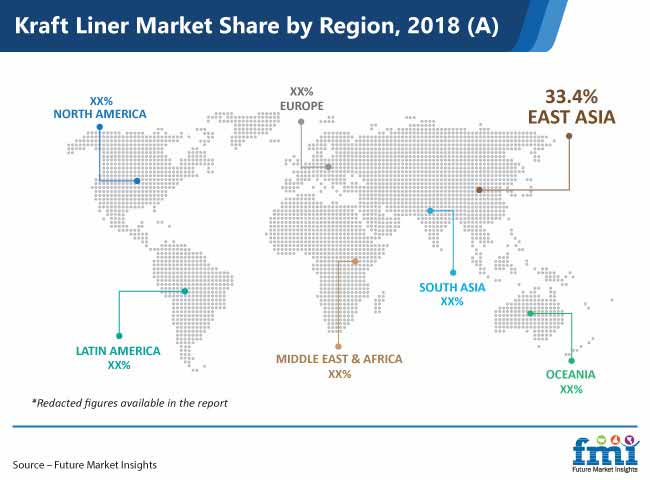Increasing demand for plastic-free packaging solutions from food and retail industries is anticipated to contribute to the growth of the global kraft liner market over the next decade. Moreover, paper and paperboard are anticipated to be the future of the packaging industry, owing to the negative perception of plastic across the globe.
Applications of kraft liner and test liner solutions are expected to increase over the forecast period, attributable to the ban on single-use plastic by governments in various countries, which is anticipated to motivate large brands and companies to use alternatives to plastic-based packaging in the foreseeable future.
On the back of these factors, the global kraft liner market is estimated to reach a value well above US$20 Bn by 2029.
Request report sample with 250+ pages to gain in-depth insights https://www.futuremarketinsights.com/reports/sample/rep-gb-6674
“Brand owners are investing aggressively in packaging, driven by rise in the adoption of premium and customized packaging solutions, and increasing consumer focus on sustainable and environment-friendly products. Manufacturers in the kraft liner market can gain substantial profits by offering more diversified packaging solutions in terms of technology and design, to aid brand owners in their objective to cater to the consumer preference for uniquely packaged goods.”
Key Takeaways of Kraft Liner Market Study
- Due to growing demand for packaged food across the world, food grade kraft liners are estimated to hold the largest market share during 2019-2029.
- Increasing demand for high strength and printable packaging solutions from large- to medium-scale enterprises is expected to offer lucrative opportunities to manufacturers offering bleached kraft liner solutions in the next decade.
- Corrugated boxes is estimated to be the leading segment in terms of application of kraft liner solutions, and is projected to remain the leading segment over the forecast period.
- e-Commerce end use is projected to witness fast-paced growth, owing to the high demand for kraft liner solutions from this industry, followed by electrical and electronics packaging.
- High growth in the manufacturing & retail sector, and increasing disposable income of consumers in China and India, make this region lucrative for investments. Manufacturers in the kraft liner market can focus on acquisitions and expansion in this region to improve their market share.
Explore the complete kraft liner market report with 45 illustrative figures, 42 data tables, and the table of contents. Also find a detailed market segmentation on https://www.futuremarketinsights.com/askus/rep-gb-6674

Product Launch – Key Strategy of Manufacturers in Kraft Liner Market
Key manufacturers in the kraft liner market are focusing on product launches, divestiture, and capacity expansion. Leading players are also focusing on the development of innovative packaging formats using kraft liners, which can be an efficient replacement for plastic packaging solutions.
- In March 2019, WestRock Company introduced new coated paper in response to the premiumization trend followed by the manufacturers of consumer and luxury goods.
- In October 2019, DS Smith Plc provided the Retail Ready Packaging (RRP) solution to Morrisons’ Best Bacon sizzles.
- In September 2017, International Paper Company invested US$ 300 Mn to convert its paper machine at the Riverdale Mill in Selma, Ala from uncoated free sheet to high quality white-top linerboard and containerboard.
About Kraft Liner Market Report
Future Market Insights, in its new report, offers an unbiased analysis of the global kraft liner market, analysing historical demand from 2014-2018 and forecast statistics for 2019-2029. The study offers growth projections of the kraft liner market on the basis of product (bleached and unbleached), basis weight (below 200 GSM, 200-400 GSM, and above 400 GSM), application (corrugated sheets, corrugated boxes, and container boards or solid boards), and end use (food {processed food, fresh produce, dairy products, food grains, confectionery & bakery, and other foods}, beverages {alcoholic and non-alcoholic}, electrical & electronics (industrial and consumer), healthcare, tobacco, automotive & allied industries, e-Commerce, chemicals & fertilizers, building & construction, and others), across seven major regions.